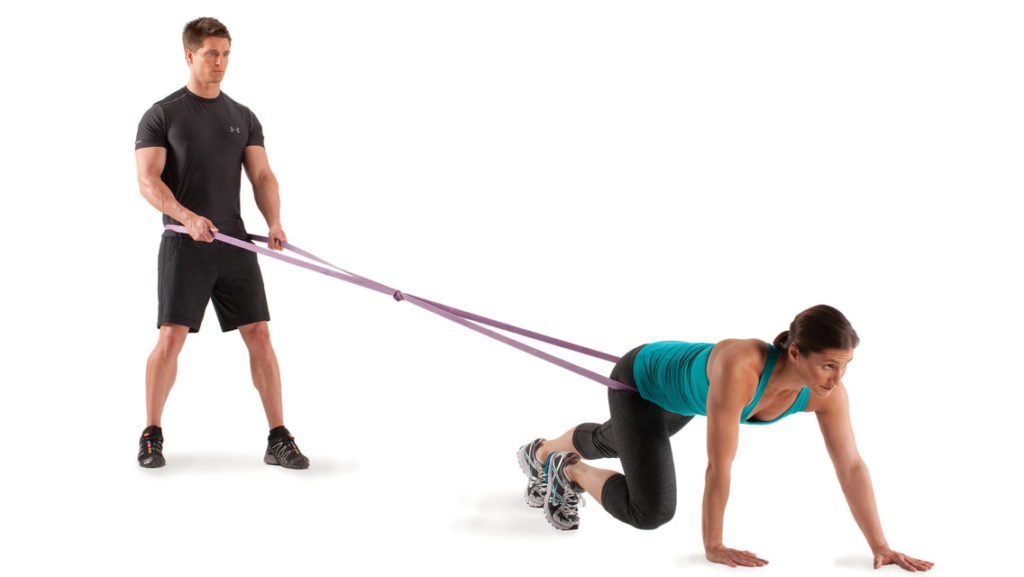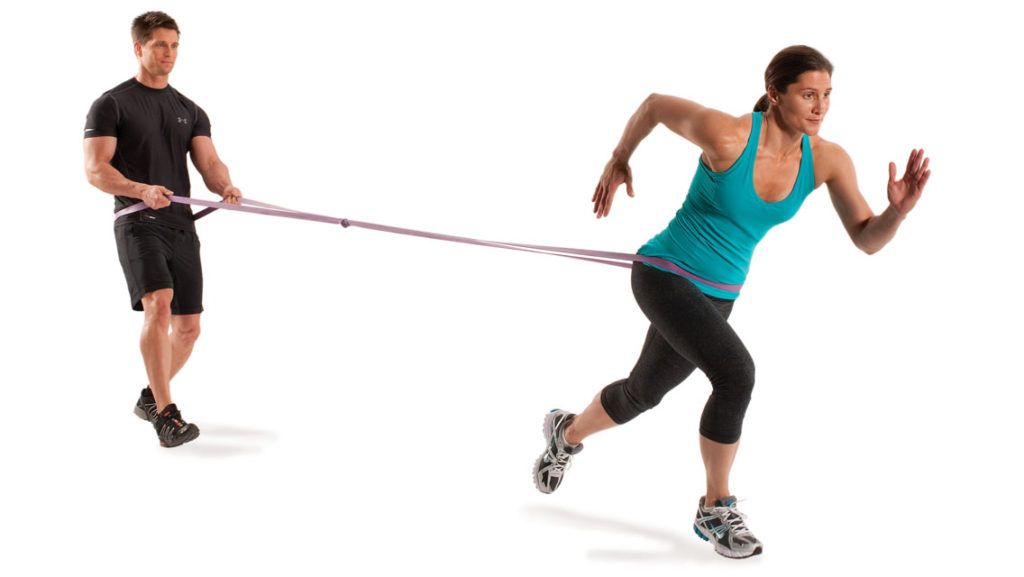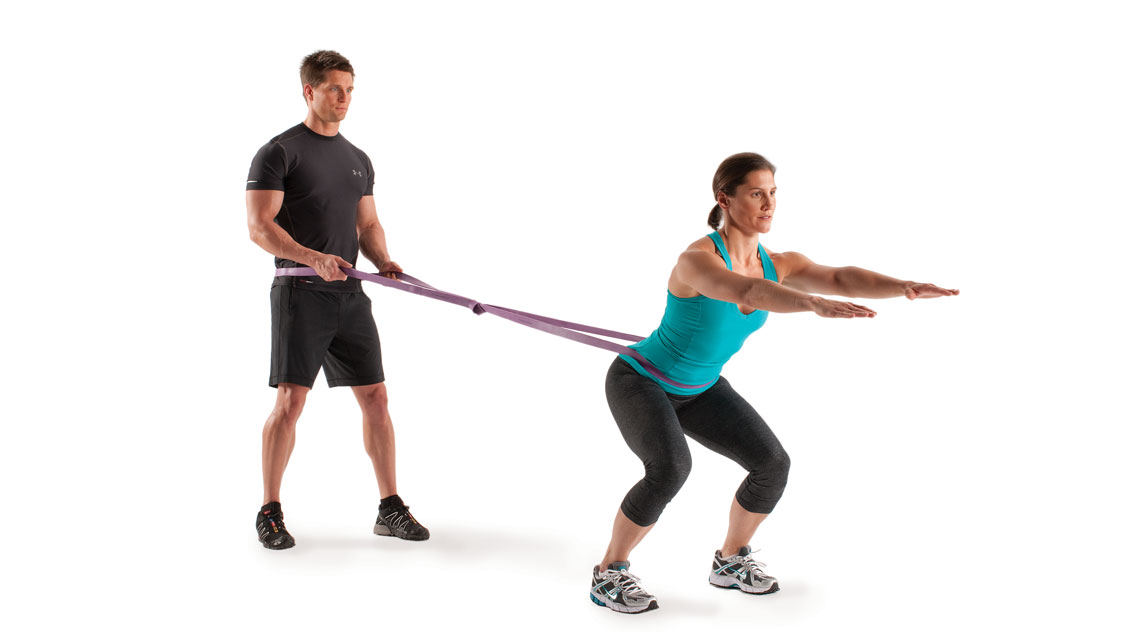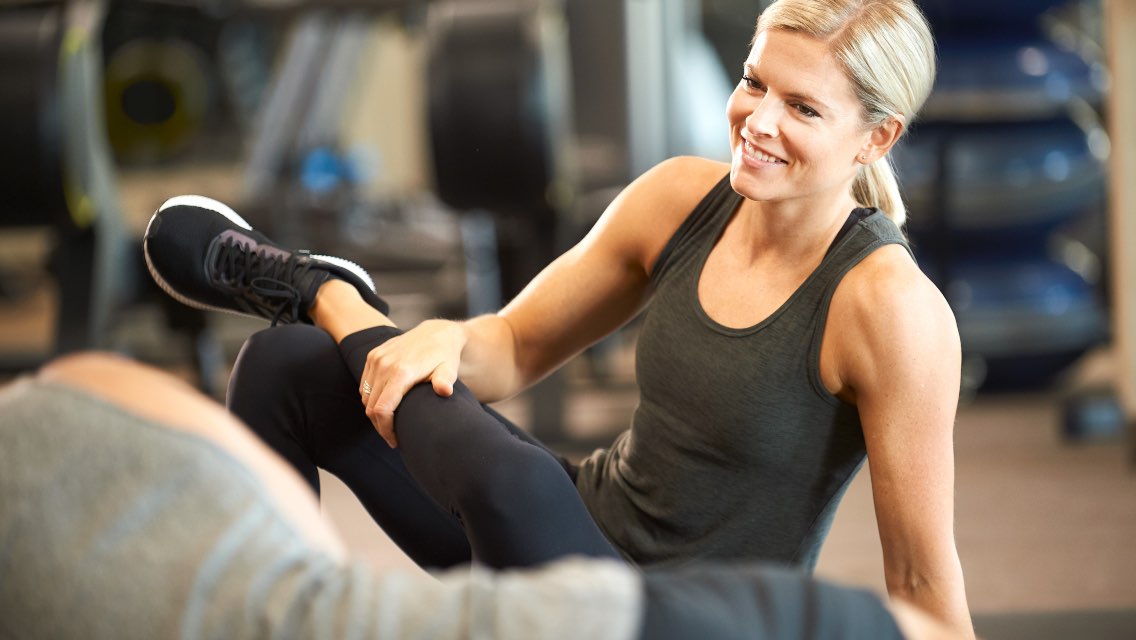Remember how you used to partner up for gym-class activities back in school? Fun, right? So don’t exercise all alone now — if you go about it right, a partner-assisted session can be a better workout.
Just ask Robert Dos Remedios, CSCS, director of speed, strength and conditioning at College of the Canyons in Southern California, and author of Cardio Strength Training: Torch Fat, Build Muscle and Get Stronger Faster (Rodale, 2009).
A workout like this lets you do exercises that would be nearly impossible to do alone. Plus, in Dos Remedios’s version, one partner is always resting while the other works. This allows the resting partner to encourage the working partner, and the built-in 1:1 work-rest ratio lends itself to the sort of high-intensity interval workout that yields the best fat-burning and fitness-building results.
Dos Remedios favors what he calls “cardio-strength” workouts, which roll metabolic and muscular benefits into a single, time-efficient session.
The following partner-assisted cardio- strength workout is one that Dos Remedios adapts for clients ranging from elite athletes to fitness-minded grandmothers.
To do it, you’ll need a partner who’s at a similar fitness level and a couple of resistance bands. The workout can be done with resistance bands with handles at either end, but Dos Remedios recommends heavy-duty single-loop bands such as FlexBands.
Practice each of the four individual exercises that make up the workout before attempting it at full pace. This will give you an opportunity to learn how to perform the movements correctly, how to work cooperatively with your partner (it’s a bit like dancing), how much resistance is needed and how quickly each person fatigues. Once you get the hang of these moves, you’ll find you can easily combine them into a sweat-inducing, all-encompassing workout for two.
Plan Your Rounds
In each of the following workouts, the active and passive partners switch roles as soon as the active partner completes each round.
The active partner will perform the following exercises consecutively: squat jumps, bear crawls, broad jumps and resisted sprints. Together, these four exercises make up one round.
Before you begin exercising, choose from one of these four suggested formats, based on your fitness level and experience with the exercises. Note: Proper execution of each exercise is crucial. If fatigue causes your form to suffer, move on to the next exercise.
Beginner: Three rounds. In each round, each partner performs 10 squat jumps, three 5-yard bear crawls, five broad jumps and a 20-yard sprint, resting as long as necessary after each exercise to feel ready for the next one.
Intermediate: Three rounds.
- Round 1: Each partner performs 10 squat jumps, three 5-yard bear crawls, five broad jumps and a 20-yard sprint without rest.
- Round 2: Eight squat jumps, two 5-yard bear crawls, four broad jumps and a 20-yard sprint without rest.
- Round 3: Five squat jumps, one 5-yard bear crawl, three broad jumps and a 20-yard sprint without rest.
Advanced: Same as intermediate, except each partner performs 10 squat jumps, three 5-yard bear crawls, five broad jumps and a 20-yard sprint in all three rounds.
Elite: Same as advanced, except both partners complete as many rounds as possible in 15 minutes.
Warm Up
Begin with a five-minute warm-up. Dos Remedios suggests a combination of light aerobic activity (jogging, jumping rope) to warm the muscles and mobility exercises (walking lunges, leg swings) to improve range of motion.
Band Setup
- Place the two bands on the floor with a slight overlap.
- Wrap the overlapping segment of the top band under the overlapping segment of the bottom band.
- Pull the overlapping segment of the top band back toward you through its larger center.
- Pull until a knot forms and the bands form a figure-eight pattern.
The Workout
Squat Jumps
a. With your feet slightly farther than shoulder-width apart, toes pointed slightly outward, lower yourself into a deep squat.
b. Leap upward as high as you can. Instead of landing on your heels, as you would if you were jumping forward, land on the balls of your feet, which will prevent the resistance band from pulling you off balance.
c. Lower yourself immediately into another squat and jump again. Be sure that the resistance is appropriate to your fitness level. (The resting partner can move closer to the active partner to reduce resistance or farther away to increase resistance.)
Bear Crawls

a. After your last squat jump, get on all fours, hips just barely higher than your shoulders. Crawl forward on your hands and feet, making sure to place half of your load on your hands, half on your feet. Pull against the resistance until you’ve gone 5 yards.
b. Bear crawl backward until you reach your starting point, maintaining the same form you had when you were moving forward. Repeat. Don’t let your hips pop up — instead, keep your knees close to the floor and maintain a natural arch in your back. Keep looking forward.
Banded Broad Jumps
a. After completing your last bear crawl, stand up and get into a quarter-squat position.
b. Spring forward, landing on both feet at the same time. Land with a slight forward lean to counteract band pull.
c. Return to the starting point by taking three very small backward hops and then repeat the exercise.
Banded Sprints

a. After completing your last broad jump, sprint away from your partner for approximately 20 yards. Avoid breaking your form around the band — keep your shoulders back and don’t bend at the waist. The resting partner should walk or run behind you at a slightly slower speed to resist your sprint without halting it altogether (or falling and being dragged along behind you!).
See the moves in action at “Partner-Assisted Cardio Workout (Video)“.
Partner-Assisted Stretching Cool-Down
Partner-assisted stretching makes the perfect cool-down after a partner-assisted cardio strength workout. Try this three-move sequence created by Chuck Wolf, MS, director of Human Motion Associates (www.hmafit.com) in Orlando, Fla., and creator of the “Flexibility Highways” method of stretching. “Most traditional stretches operate in a single plane of motion, which has limited functional benefit,” Wolf says. “My system entails three-dimensional stretches that increase mobility in key movements instead of just lengthening individual muscles or increasing range of motion in single joints.” And it so happens that working with a partner makes it easier to stretch in three dimensions.
Lateral Flexibility Highway
- Stand at your partner’s side with your left foot right next to her right foot.
- Now cross your left leg over your right and place your left foot to the right of your right foot as your partner does the mirror image.
- Bend your trunk to the left, toward your partner, as your partner bends her trunk toward you.
- Grasp your partner’s left forearm with your right hand and grasp her right forearm with your left hand as your partner grasps your forearms with her hands until you form a bridge.
- Now lean your weight outward, away from your partner, as she does the same.
You will feel stretches in the outer hips and thighs. “Be sure that the big toe of the foot of the leg that is being stretched is flat on the ground,” says Wolf. Hold the stretch for 20 to 30 seconds and repeat the stretch two to three times on each side.
Posterior X-Factor
- Several feet away from your partner, face her in a quarter-squat position, then rotate 45 degrees to the left, so your right hip is facing your partner, as your partner rotates to her right.
- Extend your arms out in front of you, overlapping them so your left arm is on top; your partner should do the reverse.
- Then reach over and grasp your partner’s left forearm with your left hand and her right forearm with your right hand as she grasps your forearms, supporting each other’s weight.
- Now bend your right leg sharply and cross it over your left so that the outside of your lower right shin rests on your lower left thigh. Your partner should also cross her right leg.
- Sit backward and drive the hips away from your partner.
You will feel a stretch in your right glutes and your left lat. Hold the stretch for 20 to 30 seconds, then reverse your position and repeat to stretch the left glutes and right lat.
The Turnpike
- Stand several feet to your partner’s right with your left foot placed ahead of your right foot. Her right foot should be a step ahead of her left.
- Reach your right arm over your head, toward your partner as she reaches her left arm overhead and toward you.
- Grasp her left forearm with your right hand as she grasps your forearm. Now extend your left arm forward and rotate your hips and spine to the right, away from your partner, as she does the opposite. You will feel a stretch in the middle of your spine and shoulders.
- Next, rotate in the opposite direction and reach back behind your body.
Repeat four to five times, then switch positions with your partner and repeat the stretch.
See the partner stretching moves in action at “Partner-Assisted Stretching Cool Down (Video)“.




This Post Has 0 Comments